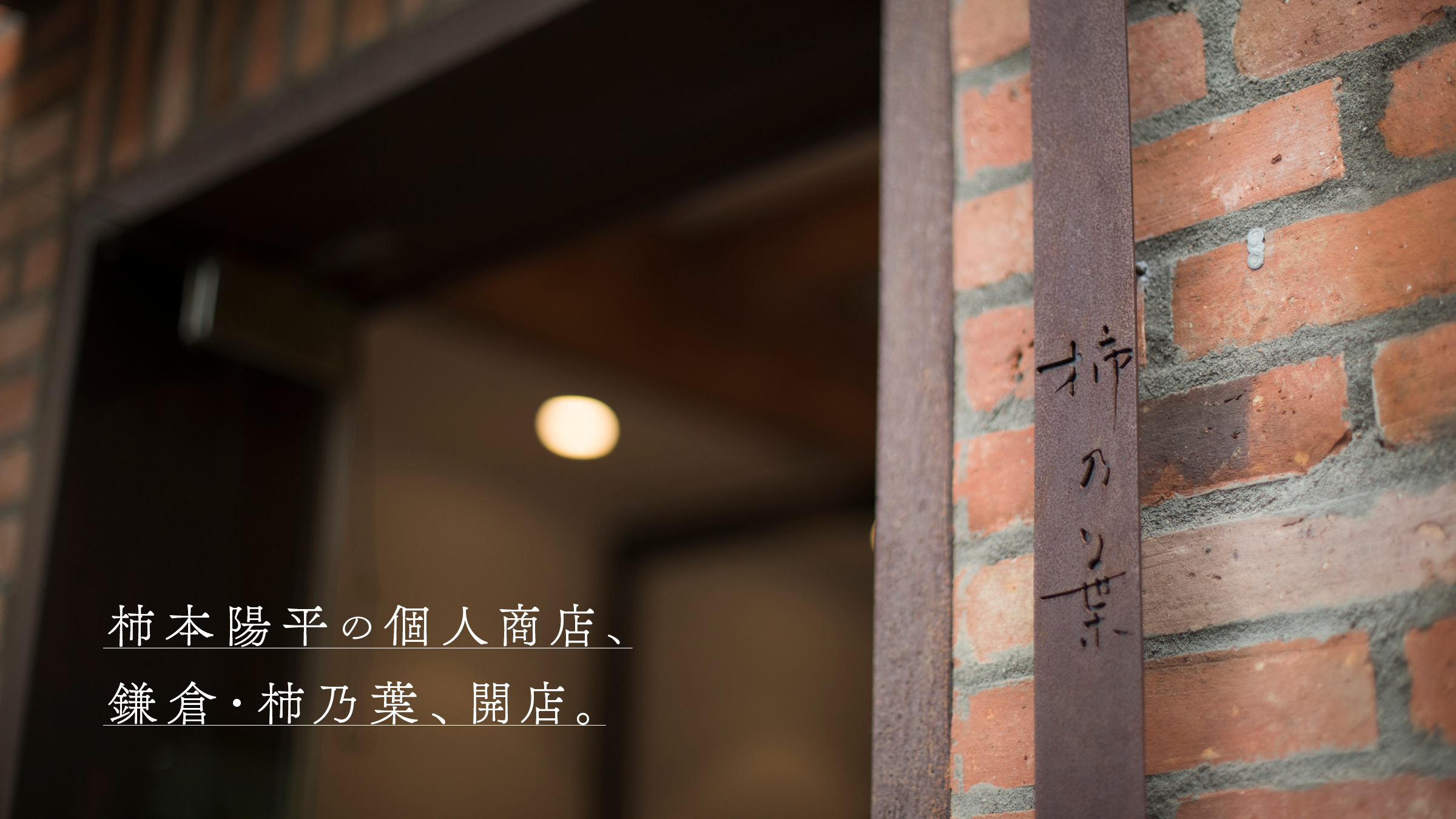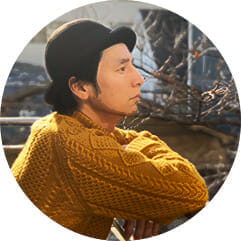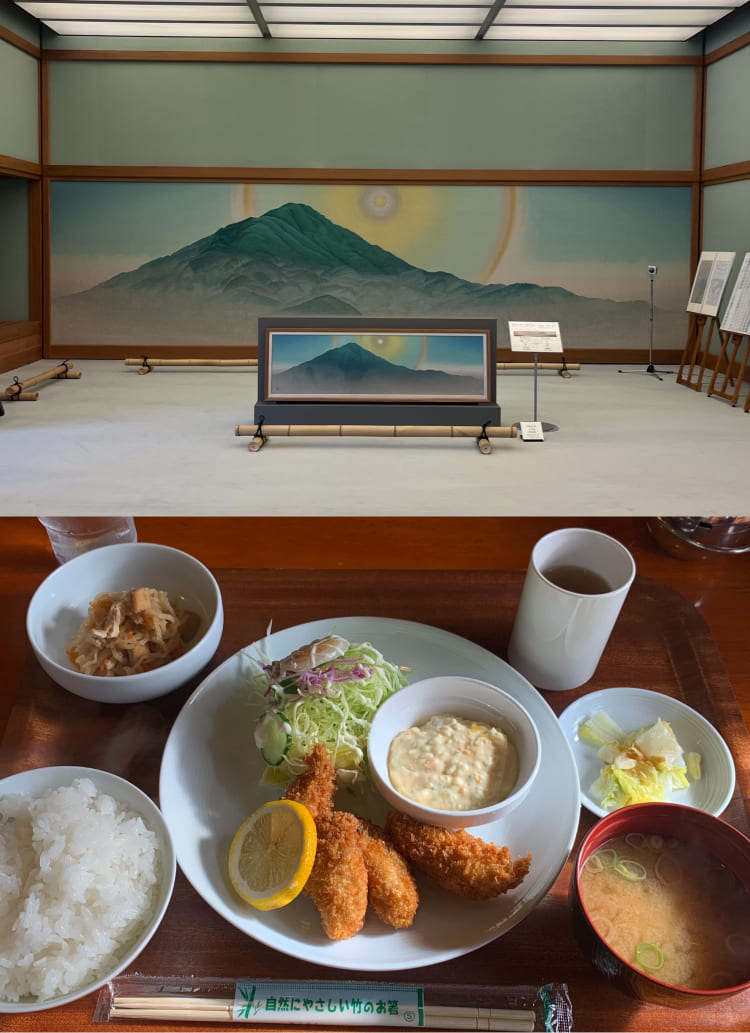
You originally wanted to open a store in Kamakura.
Kakimoto: Yes, I have been thinking about it since I was about 30 years old.
When did you start Bloom & Branch?
Kakimoto: The idea for the store started just before I turned 30, and the actual store was built two years later.
Before Bloom & Branch opened「HOUYHNHNM」The company's feelings toward Kamakura were also expressed in an interview with
Kakimoto: Yes, I have. I had been looking for a property in Kamakura for a long time, but in the end I couldn't find anything I wanted. In fact, my parallel search for a property in Aoyama proceeded much more smoothly. So, the plan was to open the first store in Kamakura and the second store in Aoyama.
I see. But that is quite a bold business plan. I think it is difficult to run a clothing store in Kamakura.
Kakimoto: Yes, I did. I persuaded the people at the company with a lot of enthusiasm. I was looking for about a year, but I couldn't find anything, but I had already started stocking up, so I started in Aoyama. But after that, I was still looking for a place in Kamakura with an eagle eye, or rather, I was always looking for a place in Kamakura.
I see. What was the reason why you decided to open your own restaurant instead of Bloom & Brunch?

Kakimoto: The scale of the stores I envisioned was getting smaller and smaller. I thought that local private stores with a strong owner's hobby element would be the most interesting, and I began to feel that I wanted to narrow the customer pie even more. Naturally, the company and I disagreed on this point.
I see. But I guess it is inevitable that there are some discrepancies in this area.
Kakimoto: Yes, I did. I had a vision for the company: a place with a lot of foot traffic and a big store, even if the rent was a little high. We also had to generate sales.
By the way, did you do a lot of research on stores in Kamakura, or in other words, stores in the same industry?
Kakimoto: No, I didn't look it up (laughs). But Kamakura doesn't have much of an image of a clothing store. Perhaps "Belluria" in Hase is somewhat similar to this store.
By the way, why do you like Kamakura so much?
Kakimoto: Hmmm, I wonder why (laughs). The reason I started coming to this area was to surf, but as I went along, my way of life changed. I started to feel that "I kind of like this area. I can't really put that into words. I also wanted to open a store in a place where the culture of clothing is not deeply rooted.
Why is that?
Kakimoto: My idea of a good restaurant is, for example, "Phaeton" in Ishikawa, "Archipelago" in Hyogo, or "Utsushiki" in Fukuoka.
I've heard a lot about these stores, all of which have a lot of character.
Kakimoto: I think it's wonderful to have a restaurant like this that you want to go to for a reason. I think it is wonderful to have a store like this that you want to go all the way out to visit for a reason. So, a place with an established clothing store was a little different from what I had in mind. I wanted to do it in the middle of nowhere.

I would like people to come to the site, not by accident.
Kakimoto: Yes, I did. I wanted to make it a store where people can come with a purpose, not just window shopping. Also, I don't intend to do only clothing in the future. What we are aiming for is a gallery or something like that.
What do you mean?
Kakimoto: A gallery is not only a place to see things, but also a place to savor the space itself. We want to create a store where, after leaving the building, people feel good even though they didn't buy anything in particular.
I see. It's like you are asking people to take something intangible home.
Kakimoto: So, although we have clothes, we are not trying to propose fashion. I am wondering if it would be possible to look at clothes in the same way you look at tableware. When you look at a dish, you hold it in your hand and look at it from various angles. For example, "This is probably cooked over firewood and covered with ashes, which is why it has this color.

Kakimoto: The clothes here are not very distinctive in appearance, so it is difficult to understand unless I explain them in words, but on the other hand, the creators put a lot of thought into them, and I hope I can convey that to the customers. This store is a space that embodies that way of selling things.

The interior is also very nice.
Kakimoto: Yes, I would like to thank you. First of all, I liked the property. This place was originally a photographer'sMishin JumonjiThe location is where "CAFÉ bee" was operated by "CAFÉ bee". Next to the cafe was a gallery, and behind the gallery was his house. After he closed the café, I decided to rent the space, but Jumonji-san didn't want the place to be too noisy since he would be inviting people to his premises, so he didn't want to have food or drink there. When I met him for the first time through an introduction, I told him the direction I wanted to take the store, the image of the space I wanted to create, and the fact that it would only be open on Saturdays and Sundays, and he liked it.



It's an exquisite place, isn't it? It is just off Komachi-dori, a street where tourists come and go, but it is strangely quiet.
Kakimoto: That's right. I hadn't really thought about Komachi-dori because it is so crowded, but I thought this would be a good location. It's a little too accessible, but it also matches the idea of a gallery-like store. I also envisioned a store without music.
Kakinoha" doesn't play sound, does it?
Kakimoto: Yes, I am. I think it is better to have a little tension.
The interior has not been significantly altered, has it?
Kakimoto: Yes, it is. There are some parts that have been slightly modified, but basically, the house was carefully constructed, so I made use of many parts of it. The walls were beige plaster, but my image was of a white box, so instead of painting them, I had them plastered over again with white plaster.
I like the hexagonal tiles.

Kakimoto: These tiles are just as they are. The name "Cafe Bee" comes from the hexagonal shape, honeycomb.
The wooden beams really match the Japanese style, don't they?
Kakimoto: There are hexagonal tiles like this in France and other countries. I like Japanese style tiles, but I also like to mix them with foreign ones.
The fixtures are also a nice touch. I put a "Pierre Jeanneret" chair on the wall.
Kakimoto: Thank you very much. The fixtures are also Scandinavian, some French, some Japanese, and so on. I also use chairs that were used in an English church.
I like the exquisite blend of Japanese and Western styles and the way it's not too "kimekime".
Kakimoto: The box itself is sophisticated, so I thought it would be better to mix in something casual and tasteful. The table for the checkout is Scandinavian, but if we put a Hans Wegner chair here, I thought it would be a little too crisp, so I thought a tasteful "Jeanneret" would be just right.

It's all very well put together. Are you using only antiques?
Kakimoto: Only the mirror is new. It is an original from a store called "Apologia" in Chiba. The fixtures are collected from various places.
Do your tastes change as you go to different countries for buying and see and hear different things?
Kakimoto: No, I haven't changed that much. I don't dress too outlandishly, and I don't like to be thought of as a dressmaker. I like things to be as normal as possible. However, I am attracted to things made of good materials and things that the makers put their heart and soul into.
So you are consistent about that.
Kakimoto: Yes, I do. The difference between Kakinoha and Bloom & Branch is that Bloom & Branch is a store filled with things that I personally buy. If it is clothes, it is a store that collects things that fit my body and look good on me. There are many great brands out there, but when I tried them on, I found that they didn't suit me. No matter how good the product is, I don't stock such things in this store. There are many good products, but not so many that I would buy myself. So I don't think there will be that many products in the future. In that sense, I don't really imagine the customers.
- 1
- 2









